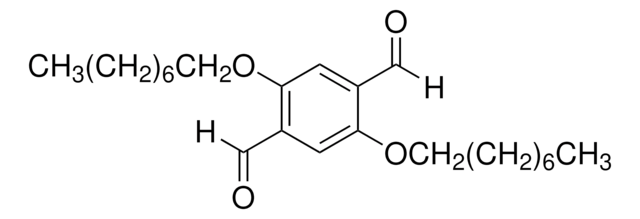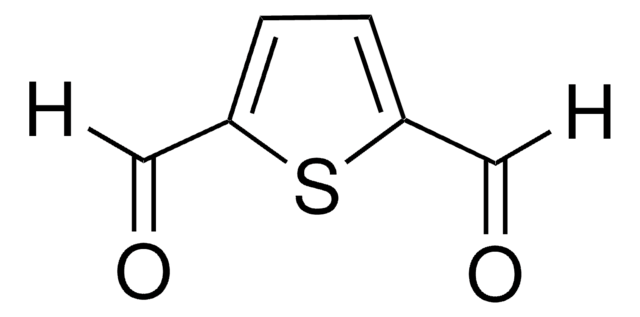393851
2-Hydroxy-5-methyl-1,3-benzenedicarboxaldehyde
97%
About This Item
Productos recomendados
Quality Level
assay
97%
form
solid
mp
128-130 °C (lit.)
functional group
aldehyde
SMILES string
Cc1cc(C=O)c(O)c(C=O)c1
InChI
1S/C9H8O3/c1-6-2-7(4-10)9(12)8(3-6)5-11/h2-5,12H,1H3
InChI key
ZBOUXALQDLLARY-UHFFFAOYSA-N
General description
Application
2-Hydroxy-5-methyl-1,3-benzenedicarboxaldehyde may be used in the synthesis of the following:
signalword
Warning
hcodes
Hazard Classifications
Eye Irrit. 2 - Skin Irrit. 2 - STOT SE 3
target_organs
Respiratory system
Storage Class
11 - Combustible Solids
wgk_germany
WGK 3
flash_point_f
Not applicable
flash_point_c
Not applicable
ppe
dust mask type N95 (US), Eyeshields, Gloves
Elija entre una de las versiones más recientes:
Certificados de análisis (COA)
¿No ve la versión correcta?
Si necesita una versión concreta, puede buscar un certificado específico por el número de lote.
¿Ya tiene este producto?
Encuentre la documentación para los productos que ha comprado recientemente en la Biblioteca de documentos.
Los clientes también vieron
Active Filters
Nuestro equipo de científicos tiene experiencia en todas las áreas de investigación: Ciencias de la vida, Ciencia de los materiales, Síntesis química, Cromatografía, Analítica y muchas otras.
Póngase en contacto con el Servicio técnico














